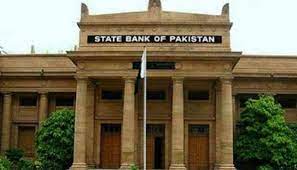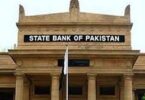F.P. Report
KARACHI: State Bank of Pakistan, Thursday, decided to maintain the policy rate at 22% owing to declining inflation, improving agriculture outlook and economic activity, and positive impacts of administrative and regulatory measures against price hike and speculative activity in commodity and forex markets.
The Monetary Policy Committee (MPC) that met here at SBP, stressed on maintaining a prudent fiscal stance to keep aggregate demand in check and termed it necessary to bring inflation down on a sustainable basis and to achieve the medium-term target of 5 – 7 percent by the end-FY25. The MPC vowed to continue monitoring the risks to the inflation outlook and take appropriate action, if required, to achieve the objective of price stability, said a statement issued here by the central bank following the MPC meeting.
The MPC decided to keep the policy rate unchanged while taking into account various factors including the latest inflation outturn that reflected a continuing declining trend in inflation from its peak of 38 percent in May to 27.4 percent in August 2023. Even though global oil prices have risen recently and are now hovering over the $90/barrel level while the rise was being passed on to consumers through adjustments in energy prices, inflation is projected to remain on a downward trajectory, especially from the second half of this year, the MPC observed adding that real interest rates continue to remain in positive territory on a forward-looking basis as well.
The committee was confident that the expected ease in supply constraints owing to better agriculture output and the recent administrative measures against speculative activity in the FX and commodity markets would also support the inflation outlook. The MPC observed that administrative and regulatory measures aimed at improving the availability of essential food commodities and curbing illegal activities in the foreign exchange market have begun to yield results and it has helped in narrowing the gap between the interbank and open market exchange rates.
The MPC noted that the agriculture outlook has improved, based on the latest data on cotton arrivals, better input conditions, and satellite data indicating healthy vegetation of other crops while the current account posted a deficit in July after remaining in surplus for the last four months, partly reflecting the impact of the recent ease in import restrictions. The latest available high-frequency indicators depict some improvement in economic activity as a moderate pick up was observed in sales of key inputs, like POL, fertilizer and cement, along with a slight increase in import volumes.
With better input conditions and latest updates, the MPC noted that the outlook of the agriculture sector has improved while earlier concerns related to floods have subsided and cotton arrivals almost doubled from last year. Moreover, the Committee assessed that domestic demand will also remain contained due to the unfolding impact of monetary tightening and envisaged fiscal consolidation.
The committee saw the current account deficit of $809 million in July 2023 largely in line with the earlier full-year current account projection for FY24, which already took into account the withdrawal of import prioritization guidelines and the resultant pickup in import volumes. The MPC viewed that overall imports were expected to remain in check, supported by the favorable trend in non-oil commodity prices, moderate domestic demand and improved cotton production while favorable rice prices and available surplus bode well for the export outlook.
The recent structural reforms related to exchange companies will strengthen their governance structure and improve market functioning, the committee noted and hoped that on balance the current account deficit to remain in the earlier projected range for FY24. Terming 27.2 % increase in FBR revenue in the initial 2 months of FY24 as the impact of both fiscal measures and some recovery in economic activity, the MPC viewed that achieving the targeted primary surplus of 0.4 percent of GDP was critical to support monetary policy in delivering on its objective of price stability.
Attaining fiscal consolidation through broadening the tax base, providing targeted subsidies only to the most vulnerable, and reducing losses of public sector enterprises through privatization or reforms would help bringing inflation down in the targeted range and achieve sustainable economic growth over the medium term, the committee maintained. Referring to the decelerated growth of broad money and reserve money in FY24 the MPC noted that the trend mainly reflected a significant reduction in currency in circulation while expected fiscal consolidation, realization of planned external inflows and an uptick in economic activity would provide space for a moderate expansion in private sector credit this year.







